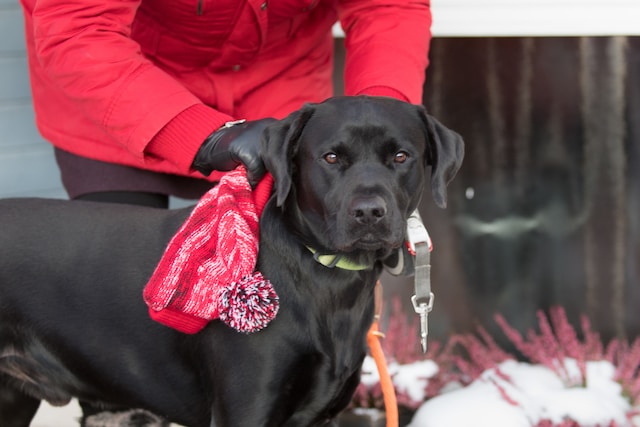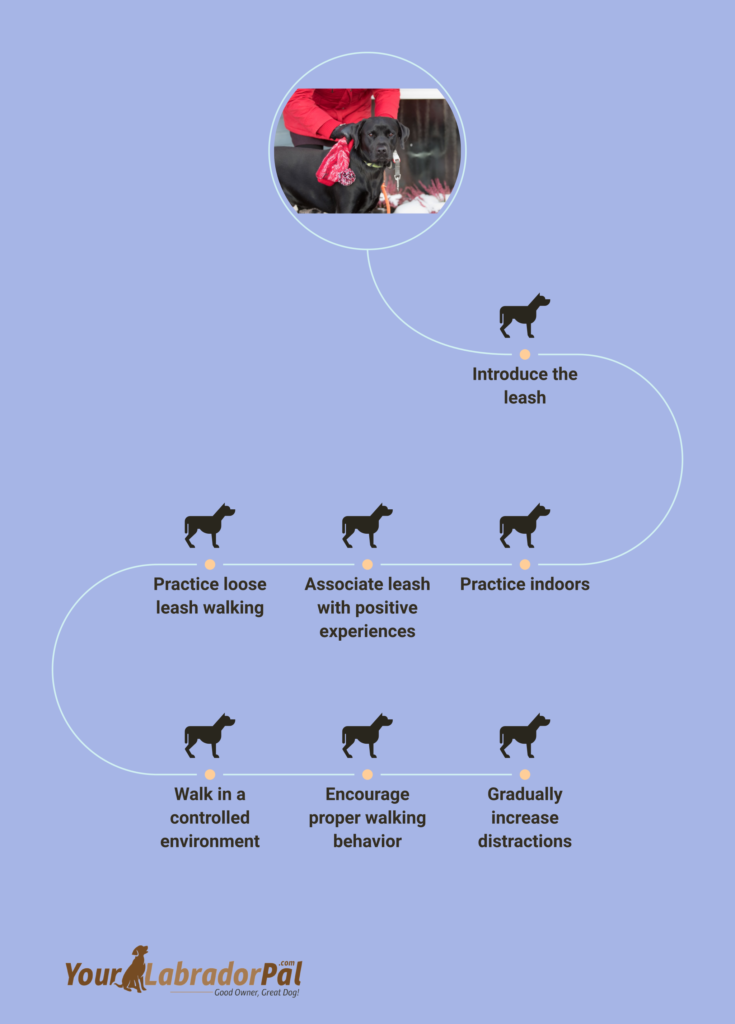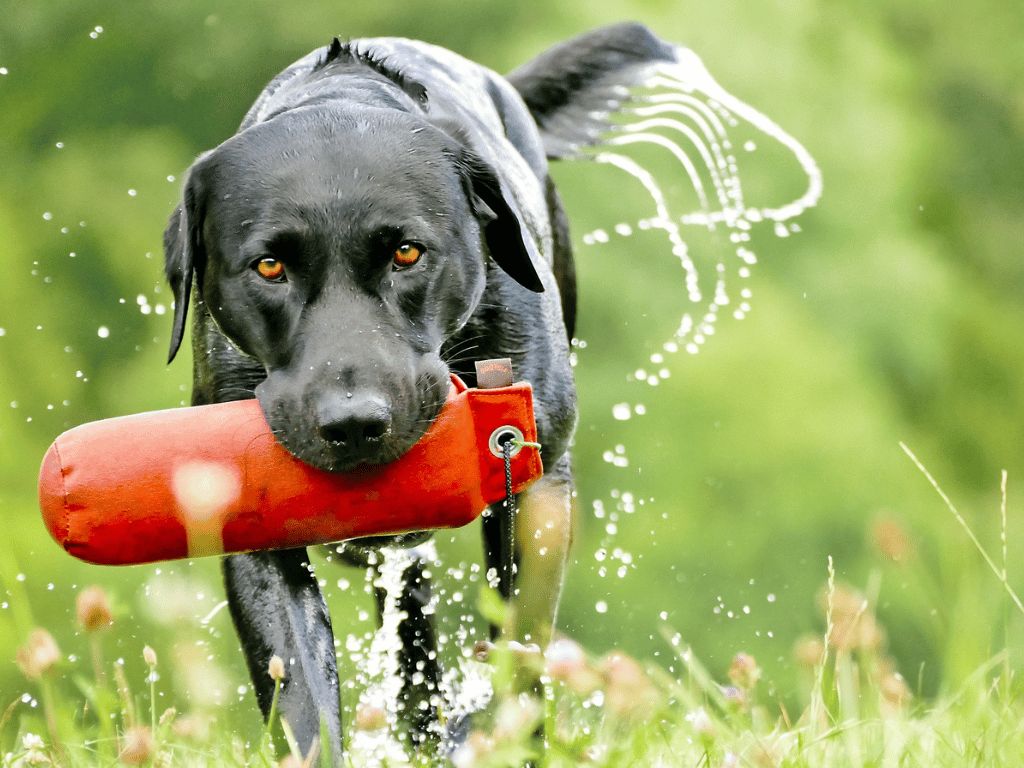Walking 101: How to Train a Labrador to Walk on a Leash
Have you ever wondered how to train your Labrador to walk on a leash? Walking your beloved furry friend can be a delightful experience, but it can also turn into a frustrating tug-of-war if they aren’t properly trained. In this blog post, we will explore effective techniques and recommendations to help you teach your Labrador to walk calmly and confidently by your side. Whether you have a mischievous puppy or an adult dog who needs some leash manners, we’ve got you covered. So, let’s get started on this exciting journey toward enjoyable walks with your Labrador!
Importance of Leash Training for Labradors

Leash training plays a crucial role in the development and well-being of Labrador Retrievers, offering numerous benefits for both the dog and its owner. Labradors are known for their boundless energy and enthusiasm, making leash training an essential aspect of their overall training regimen.
Firstly, leash training provides safety and control. Labradors, being strong and adventurous, can easily become overexcited or distracted while outdoors. By teaching them to walk on a leash, owners can effectively manage their dogs’ movements and prevent them from running into potential dangers, such as busy streets or hazardous situations. This instills a sense of security for both the owner and the Labrador, allowing for enjoyable and stress-free walks.
Secondly, leash training promotes good behavior and socialization. Labradors are sociable dogs that thrive on interaction with humans and other animals. Proper leash training enables them to learn appropriate behavior in various settings, such as parks or public spaces, where they encounter other people and pets. By practicing leash walking, Labradors become accustomed to following their owner’s lead, behaving calmly, and respecting boundaries. This not only enhances their social skills but also fosters positive interactions with strangers, reducing the likelihood of aggressive or unruly behavior.
Preparation to Train a Labrador to Walk On a Leash
Here are some steps to help you prepare for the training process:
🟦 Gather the necessary equipment
Acquire a sturdy leash (4 to 6 feet long) made of nylon or leather, a well-fitting collar or harness, and some treats or rewards for positive reinforcement. It’s important to choose a leash that is comfortable to hold and durable enough to withstand your Labrador’s strength and energy.
🟦 Familiarize your Labrador with the equipment
Before using the leash and collar or harness, allow your dog to sniff and investigate these items. This helps them become familiar with the scents, textures, and sounds associated with wearing a leash and collar. You can let your Labrador interact with the equipment by placing them on the ground or holding them loosely.
🟦 Gradual introduction to wearing the collar or harness
If your Labrador isn’t used to wearing a collar or harness, introduce it gradually to help them get accustomed to the feeling. Start by placing the collar or harness loosely around their neck or body for short periods indoors. Praise and reward your Labrador with treats, verbal praise, or playtime for wearing the collar or harness calmly.
🟦 Positive association with the leash
Once your Labrador is comfortable wearing the collar or harness, attach the leash and let it drag on the ground while your dog is supervised indoors. This allows them to experience the sensation of the leash without any tension or pressure. It also helps prevent any negative associations with the leash, as dragging it allows your Labrador to explore freely and associate it with positive experiences.
🟦 Practice leash handling
Hold the leash loosely and allow your Labrador to walk around while you hold the other end. Start indoors or in a quiet, familiar area with minimal distractions. Gradually increase the duration of these practice sessions to help your dog become comfortable with the feeling of having the leash connected to their collar or harness. Avoid pulling or tugging on the leash during this stage. Instead, focus on creating a positive and relaxed experience for your Labrador.
🟦 Establish a reward system
Determine what treats or rewards motivate your Labrador and have them readily available during training sessions. Find high-value treats that your dog finds especially enticing. Treats should be small, soft, and easy to consume quickly, so they don’t interrupt the flow of training. Use treats as positive reinforcement when your Labrador exhibits desired leash behavior such as walking calmly by your side or looking at you for guidance.
🟦 Create a calm and positive environment
Choose a quiet and low-distraction area for your initial training sessions. This will help your Labrador focus and minimize any potential distractions that may hinder their learning. Gradually introduce more challenging environments and distractions as your Labrador becomes more comfortable with leash walking. Remember to remain patient and maintain a calm and positive demeanor during training to create a supportive atmosphere for your dog.
🟦 Set realistic expectations
Understand that leash training takes time and patience. Each dog learns at their own pace, so be prepared for gradual progress. Stay consistent and avoid rushing the process. Celebrate small victories along the way, such as improved leash manners or reduced pulling. Keep in mind that some Labradors may naturally have a higher energy level, requiring more time and effort to master leash walking.
🟦 Seek guidance if needed
If you’re uncertain or facing difficulties during the preparation or training process, consider consulting a professional dog trainer. They can provide personalized advice and guidance tailored to your Labrador’s specific needs. A trainer can help identify any potential issues, offer effective training techniques, and ensure that you and your Labrador are on the right track to successful leash walking.
By adequately preparing yourself and your Labrador for leash training, you set the stage for a smoother and more successful training experience. Remember to be patient, consistent, and positive throughout the process. With time and effort, your Labrador will learn to walk calmly and enjoyably on a leash, making your walks together more enjoyable for both of you.
Basic Obedience Training for Labrador to Walk On a Leash
Training a Labrador to walk on a leash is an essential aspect of basic obedience training. It allows you to have better control over your dog’s movements and ensures their safety during walks. Here are the recommended steps to help you teach your Labrador to walk nicely on a leash:
🟩 Introduce the leash
Start by introducing your Labrador to the leash positively and calmly. Allow them to sniff and investigate the leash while providing treats and praise to create positive associations. Gradually, attach the leash to their collar or harness for short periods while you supervise them.
🟩 Practice indoors
Begin training indoors in a quiet area where there are minimal distractions. Attach the leash to your Labrador’s collar or harness and let them drag it around for short periods while you supervise. This allows them to get used to the feeling of wearing a leash and reduces the likelihood of resistance during walks.
🟩 Associate leash with positive experiences
When your Labrador is wearing the leash, engage them in activities they enjoy. This could include playtime, feeding, or offering treats. By associating the leash with positive experiences, your dog will develop a positive attitude toward it.
🟩 Practice loose leash walking
With your Labrador on the leash, stand still and hold the leash loosely. Encourage your dog to come towards you using treats or a toy. When they start moving towards you, reward and praise them. Gradually increase the distance between you and your dog as they become more comfortable walking on the leash.
🟩 Walk in a controlled environment
Once your Labrador is comfortable walking towards you, start taking short walks in a controlled environment, such as your backyard or a quiet park. Keep the leash loose and use treats and praise to reward them for walking close to you without pulling. If your dog begins to pull, stop walking and wait for them to release tension on the leash before continuing.
🟩 Encourage proper walking behavior
Whenever your Labrador pulls on the leash, stop walking and stand still. Avoid pulling back on the leash, as this can encourage pulling. Wait for your dog to relax and release tension on the leash before continuing. Reward and praise your Labrador for walking nicely beside you. This process teaches them that pulling will not get them to their destination faster.
🟩 Gradually increase distractions
As your Labrador becomes more proficient at walking on a leash, gradually increase the level of distractions. Practice in different environments with varying levels of distractions, such as busier streets or parks with more people and other animals. This helps your dog generalize their leash training skills and remain focused regardless of the environment.
🟩 Be patient and consistent
Remember that leash training takes time and patience. Consistency is key. Practice regularly, keep training sessions short and positive, and remain patient with your Labrador as they learn. It is vital to maintain a calm and positive demeanor throughout the training process to avoid frustrating your dog.
Leash training is an ongoing process that requires dedication and patience. Each dog learns at their own pace, so it’s important to tailor the training to suit your Labrador’s needs. If you encounter any difficulties or need further guidance, consider consulting a professional dog trainer who can provide personalized assistance based on your dog’s specific behaviors and temperament.
Leash Walking Technique for Labradors
Here’s a technique you can use to train your Labrador to walk confidently on a leash:
🟨 Short Leash
Using a shorter leash allows you to have better control over your Labrador and keeps them closer to you. It minimizes the opportunity for your dog to wander off or become easily distracted. A shorter leash also helps you provide clearer guidance and prevents your Labrador from building up momentum and pulling.
🟨 Avoid Tension
It’s important to keep the leash relaxed and avoid constant tension. When the leash is taut, it can inadvertently signal to your Labrador that they need to pull against it. Instead, maintain a loose leash, allowing your Labrador to move naturally while still being under your control. Apply gentle pressure or guide your dog only when necessary.
🟨 Use Verbal Cues
Verbal cues are valuable tools for leash walking training. Teach your Labrador specific commands such as “heel” or “let’s go” to indicate that you want them to walk beside you. Start by saying the cue when your dog is walking in the desired position, and reward them with praise or a treat. Over time, your Labrador will associate the verbal cue with the appropriate behavior.
🟨 Take Breaks
During walks, it’s important to give your Labrador occasional breaks. Allowing them to sniff around, explore, and have some freedom helps prevent them from becoming overly excited or frustrated, which can lead to pulling. Use these breaks as opportunities to reinforce good behavior and practice commands like “sit” or “stay” before resuming the walk.
🟨 Practice Focus Exercises
Teaching your Labrador to focus on you during walks is beneficial for maintaining their attention and responsiveness. Hold a treat near your face, say your dog’s name, and wait for them to make eye contact. When they do, reward them with praise and a treat. Regularly practicing these focus exercises strengthens the bond between you and your Labrador and encourages them to pay attention to you while walking.
🟨 Gradual Introductions
Expose your Labrador to various environments, including different types of surfaces, sights, and sounds, to help them become more confident and adaptable during walks. Start with quieter areas and gradually introduce them to busier places with more distractions. This gradual exposure allows your Labrador to adjust to new stimuli and learn to remain focused on you despite external distractions.
By following these expanded recommendations and maintaining a consistent and positive training approach, you can help your Labrador become a well-behaved and enjoyable walking companion.
Recognizing and Correcting Common Mistakes When Training a Labrador to Walk On a Leash
Training a Labrador to walk on a leash can be a rewarding experience, but it’s important to address and correct common mistakes that may arise during the training process. Here are some common mistakes and recommendations for correcting them:
🟥 Pulling on the leash
Many Labradors have a natural inclination to pull on the leash, making walking uncomfortable and frustrating for both the dog and the owner. To correct this mistake, try the following techniques:
- Stop walking whenever your Labrador pulls. Stand still and wait until the leash loosens before proceeding. This teaches your dog that pulling doesn’t lead to progress and that walking beside you without tension is the desired behavior.
- Use positive reinforcement techniques. When your Labrador walks politely beside you without pulling, reward them with treats, praise, or a favorite toy. This positive association encourages them to repeat the behavior.
- Consider using a no-pull harness or head collar. These tools can provide better control and help redirect your Labrador’s attention back to you when they try to pull. Gradually transition from these tools to a regular collar or harness as your Labrador improves their leash manners.
🟥 Inconsistent leash length
Maintaining a consistent leash length is important for effective leash training. Inconsistency can confuse your Labrador and make it difficult for them to understand your expectations. To address this:
- Hold the leash at a length that allows your Labrador to walk comfortably beside you, with a slight slack in the leash. Avoid holding it too tight, as it can signal tension and discomfort to your dog.
- Practice walking with a consistent leash length. Reinforce the desired behavior whenever your Labrador stays by your side. You can use treats, praise, or clicker training to mark and reward the correct position.
- If your Labrador starts to forge ahead or lag, use gentle leash cues to remind them to maintain the desired position. For example, you can give a slight tug or provide verbal cues like “heel” or “close.”
🟥 Lack of focus and attention
Labradors are known for their energy and enthusiasm, which can lead to distractions during walks. Lack of focus and attention can hinder leash training progress. To address this:
- Begin training in a low-distraction environment, such as a quiet street or a fenced yard. As your Labrador becomes more proficient, gradually increase the level of distractions, such as introducing other dogs or people during walks.
- Use high-value treats or rewards to capture and maintain your Labrador’s attention during walks. Find treats that your Labrador finds particularly enticing, such as small pieces of cooked chicken or cheese. Use these rewards to reinforce their focus on you while walking.
- Incorporate basic obedience commands into your leash training. Teach your Labrador commands like “sit,” “stay,” or “look at me.” These commands can help redirect their attention back to you and reinforce focus and engagement during walks.
🟥 Insufficient exercise
Labradors are a high-energy breed and require regular exercise to be calm and focused during walks. Insufficient exercise can lead to restlessness and increased pulling tendencies. To avoid this mistake:
- Prioritize providing adequate physical exercise to your Labrador. Engage them in activities such as fetch, jogging, or off-leash play in a safe and controlled environment. These activities help burn off excess energy, making your Labrador more relaxed and focused during leash training sessions.
- Mental stimulation is also important for Labradors. Incorporate interactive games, puzzle toys, or obedience training sessions into their routine to tire them mentally. A mentally tired Labrador is more likely to be focused and responsive during leash training.
- Consider scheduling exercise and training sessions before walks. This helps your Labrador expend some energy and become more receptive to leash training.
🟥 Inconsistent training sessions
Consistency is key when training any dog, including Labradors. Inconsistent training sessions can lead to confusion and slow progress. Correct this mistake by:
- Establishing a regular training schedule and sticking to it. Aim for short and frequent training sessions, preferably every day or every other day. Consistency helps reinforce the training concepts and allows your Labrador to progress steadily.
- Ensure that all family members involved in the training are consistent with commands and expectations. Use the same cues and reward systems to avoid confusion and reinforce the desired behaviors.
- Review and revise your training plan as needed. Observe your Labrador’s progress and adjust your methods accordingly. Some dogs may require more repetitions or a slower pace, while others may progress quickly. Tailor your training approach to your Labrador’s individual needs and personality.
Remember, training a Labrador to walk on a leash takes time, patience, and positive reinforcement. Each dog is unique, so adapt your training methods to suit your Labrador’s temperament and learning style. If you encounter persistent challenges or need additional guidance, consider seeking assistance from a professional dog trainer or behaviorist who specializes in leash training.
Graduating to Off-Leash Activities
Graduating to off-leash activities with your Labrador is an exciting milestone that requires careful preparation and training. This transition can provide your dog with more freedom and opportunities for exploration and exercise. However, it’s crucial to prioritize safety and ensure your Labrador has a reliable recall command before venturing into off-leash environments. Here are some additional tips to expand upon the previous list and help you successfully navigate off-leash activities with your Labrador:
🟪 Establish a solid foundation
Before transitioning to off-leash activities, make sure your Labrador has mastered basic obedience commands such as “sit,” “stay,” and “come” while on a leash. This foundation will serve as a basis for off-leash training and communication.
🟪 Use positive reinforcement
Positive reinforcement is key to training your Labrador for off-leash activities. Reward good behavior, such as coming when called, with treats, praise, and playtime. This approach reinforces the desired behavior and strengthens the bond between you and your dog.
🟪 Practice recall in various environments
Gradually expose your Labrador to different environments and distractions while practicing recall. Start in a quiet area and gradually introduce more distractions such as other dogs, people, or enticing scents. This step-by-step approach will help your Labrador generalize the recall command and respond reliably in various situations.
🟪 Consider professional training
If you’re finding it challenging to train your Labrador for off-leash activities on your own, enlisting the help of a professional dog trainer can be beneficial. A trainer can provide guidance, offer specialized techniques, and address any specific behavioral issues or challenges you may be facing.
🟪 Leverage technology
In today’s digital age, there are several technological tools available to enhance off-leash training and safety. GPS tracking collars or tags can help you keep track of your Labrador’s location, providing peace of mind during off-leash adventures. Additionally, remote training collars can be used as a training aid, offering gentle stimulation to reinforce commands when necessary.
🟪 Gradually increase distractions
As your Labrador becomes more reliable with their recall command, gradually increase the level of distractions during training sessions. This could include practicing recall in a park with other dogs around or a busy outdoor setting. By exposing your Labrador to controlled distractions, you’ll help them build focus and responsiveness.
🟪 Utilize play as a reward
Incorporate play into your off-leash training sessions as a reward for good behavior. Play fetch, engage in a game of tug-of-war, or simply spend quality bonding time with your Labrador. This not only reinforces positive behavior but also makes the training experience enjoyable for your dog.
🟪 Be mindful of your body language
Dogs are highly perceptive to body language, so it’s important to project calm and confident energy when training off-leash. Maintain an upright posture, use clear and consistent commands, and avoid displaying nervousness or tension. Your Labrador will be more inclined to follow your lead and respond to your cues.
🟪 Maintain a strong connection
Building a strong bond with your Labrador is crucial for successful off-leash activities. Engage in regular interactive play sessions, provide mental stimulation through puzzle toys or training games, and spend quality time together. The stronger the bond you have with your Labrador, the more likely they will stay focused and responsive during off-leash adventures.
🟪 Stay updated on local regulations
Before engaging in off-leash activities, familiarize yourself with local leash laws and regulations. While certain areas may have designated off-leash areas or dog parks, other places may require dogs to be on a leash at all times. Respecting these rules ensures a positive experience for both you and your Labrador while also being considerate of others in public spaces.
Remember, the journey to off-leash activities is a gradual process that requires patience, consistency, and ongoing training. Each dog progresses at their own pace, so tailor your approach to suit your Labrador’s needs. Celebrate small victories along the way, and most importantly, enjoy the special moments you’ll share with your Labrador during off-leash adventures.
Final Words
In conclusion, training your Labrador to walk on a leash can greatly enhance your bond and provide both of you with a safe and enjoyable outdoor experience. It may seem like a daunting task at first, but with patience, consistency, and positive reinforcement, you can teach your furry friend to become a well-behaved and confident walker.
Remember to start training early, as puppies are more receptive to learning and adapting to new experiences. Begin with short, frequent walks in a quiet environment, gradually increasing the duration and introducing distractions along the way. Use a comfortable and properly fitted harness or collar, ensuring that it doesn’t cause any discomfort or restrict your Labrador’s movements. With time, effort, and lots of love, you’ll be amazed at how much progress you can make.
To learn more about training a Labrador, just click here. Happy training!








